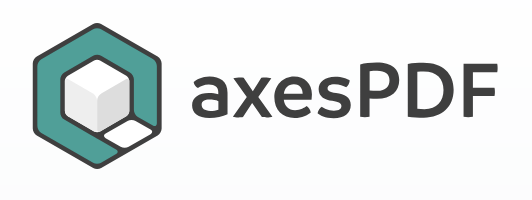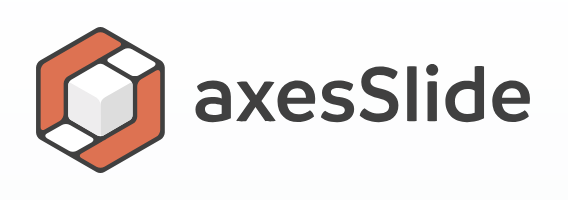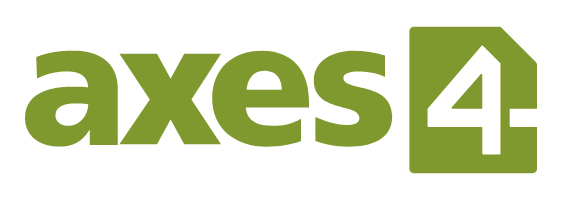|
Our solutions are based on
tested, reliable, and highly accessible software solutions.
NewFormat is Appointed Reseller and Solution Partner in
Nordic (Sweden, Denmark, Finland, Iceland, Norway)
and
Baltic Region (Estonia, Latvia, Lithuania)
of leading technology for accessible PDF from axes4.
|
Understanding the Concept of "Accessible PDF"

What is an accessible PDF?
To ensure that PDF-based content is accessible to people
with disabilities or can be adapted for different usage situations
(for example, for reading on mobile devices, smartphones,...),
it must be available in digitally accessible form.
An accessible PDF contains an invisible structure layer,
that is similar to HTML, on which all content-relevant elements
are coded in the correct order in a machine-readable manner and
important additional information is included for comprehension
and targeted navigation.
The structure elements, that build this structure layer,
are called "PDF tags".
Think of them as name plates that are attached to each
content element and convey additional information such as
“I am a first-level heading” or “I am a list with 3 entries”.
PDF page view with related PDF tags

Source: axes4.com
Such additional information makes up the essential part of an accessible PDF.
They make the content machine-readable and enable assistive technologies,
such as a screen reader, to present the content appropriately,
independently from the visual page view.
Important.
Precondition for working with a PDF document for accessibility
is that your PDF document already has a tag structure.
If this is not the case then first create a PDF with tags,
either from converting the source document or
with a PDF editor.
There are some basic technical requirements for accessible PDFs
that you can easily check with a PDF Accessibility Checker (PAC) tool,
like:
For integration of automatic check for PDF accessibility
according to PDF/UA and W3C/WCAG into
systems or software as a REST API,
we do recommend the use of:
Why is PDF accessibility important?
On the one hand, much essential information exists exclusively as PDF content.
PDF is the most widely used file format worldwide for exchanging documents;
be it reports, minutes, tickets or bank statements, for example.
However, most PDFs available to date have massive barriers for
people with disabilities or are inadequately equipped for current and
future usage scenarios (mobile Internet, AI, Big Data, for example).
Accessible PDFs provide a remedy here.
On the other hand, PDF accessibility is already required
by law for many organizations.
The laws are gradually being extended to other areas.
The EU would like to play a pioneering role here,
because digital inclusion enables all people to
participate fully in the information society.
"Many people don't know that PDFs actually have to be barrier-free.
There are still misunderstandings,
e.g. some people say that PDFs are not a website,
but it is clear, and PDFs must be just as accessible.
I would like to clarify that."
Michael Wahl,
Head of the German Federal Monitoring Agency for
Accessibility in Information Technology
PDF/UA - The ISO Standard for PDF Accessibility
The ISO standard 14289, also known as PDF/UA,
where UA stands for Universal Access, guarantees
the best possible user experience for end users of
the most widely used document format in the world.
- Which PDF/UA requirements need to be evaluated?
- Basic requirements
Are the basic rules according to the PDF specification adhered to?
- Logical structure
Are there errors in the tag tree that make content inaccessible?
- Metadata and settings
Does the PDF have settings that limit accessibility
or is it missing important metadata that is required for smooth processing?
WCAG - The global guidelines for accessible web content
The WCAG (Web Content Accessibility Guidelines)
Level A and AA for a PDF.
- Which WCAG requirements need to be evaluated?
- Perceivable
Can all content-relevant elements be perceived?
This includes requirements such as:
- Are text alternatives available?
- Is the contrast minimum met?
- Is it possible for software to distinguish between
content-relevant and decorative elements?
- Is software able to access all content-relevant elements?
- Operable
Are information, settings, and mechanisms available to enable
navigation and interaction (for example, with form fields)?
These include:
- Is the title available?
- Is the tab order set for interactive elements?
- Understandable
Can users understand the content and user interface,
even if they use voice output, for example?
These include:
- Are natural language defined for all elements?
- Is there a Unicode equivalent for each character?
- Robust
Are the basic rules according to the PDF specification adhered to?
Common Ways for the Creation of Accessible PDF Documents

There are three common methods for the creation of accessible PDF documents.
These depend on the respective format in which the content is available.
The direct method based on source format
such as MS Word, MS PowerPoint and Adobe InDesignIf you want to create accessible PDF documents with authoring software
like Microsoft Word, Microsoft PowerPoint, Adobe InDesign, Adobe Acrobat,
or if you want to convert a structured format like HTML or XML into PDF,
you usually click the magic “Create PDF” button.
If the conversion software does a good job,
the necessary internal tag tree is created
automatically in a high quality.
But all too often, unfortunately,
the quality of the exported tag tree is too low.
So do not expect too much.
Only very few software programs offer the possibility to create high-quality
PDF/UA compliant documents out of the box or at least with less effort.
Luckily there is a better way to do it.
Create all accessibility features in the source file and use a
complementing software tool to convert it into accessible PDF
to get a 100% PDF/UA compliant document in a few minutes.
Some reliable software tools:
- For MS Word use the plugin:
- For MS PowerPoint use the plugin:
- For Adobe InDesign use the plugin:
In all three cases above you will get a
conforming accessible PDF/UA file,
without any forced need for post-adjustment of
the exported PDF/UA file!
The indirect method based on existing PDF file: In principle, any PDF can be made accessible.
If the legacy source file is no longer available,
or if it would take too much time to redo the work in the source file,
or if the authoring software doesn’t do a good conversion job,
you can take on the PDF without tags, generally a web-PDF, and rework it.
During this process you tag every relevant content element and
add some additional accessibility features like alt text to figures.
For doing this you need a software tool, a PDF editor,
that facilitates this process and that is capable to
create and edit PDF tags, such as:
From data: Many PDF documents, especially in automated workflows,
are created from live data/databases.
The more structured the data, the easier it is to
create accessible PDF files on the fly in
combination with layout templates.
Special software solutions exist that support such use cases:
General note for all methods above:
For a final accessibility assessment, however,
further checks are required that only a human can perform;
for example, whether the sequence of elements is correct,
the tags correspond to the visually recognizable semantics,
or alternative texts adequately reflect
the core message of an image.
News - New key features in axes4 software solutions
See also axes4 blog
Universal Accessibility
Software and Services Empowering Easy Creation of
Accessible PDF Documents (PDF/UA)

Products

PDF Accessibility Checker (PAC)
Validate any existing PDF file for
PDF/UA and WCAG compliance

Create PDF/UA and WCAG compliant PDF files
from within MS Word

Remediate any existing PDF for PDF/UA compliance

Create PDF/UA and WCAG compliant PDF files
from within MS PowerPoint

Validate any existing PDF file for
PDF/UA and WCAG compliance (web-based)

Integrate automatic check for PDF accessibility
according to PDF/UA and W3C/WCAG
into systems or software as a REST API
Services

 
(Click on the desired service above for detailed information)
axes4 Support and Service Level Agreement (SLA)
Support and the SLA contract are mediated by NewFormat AB and
concluded between axes4 (product owner) and end-customer:
axes4 Support Basic
(included in the subscription fee)
and
axes4 Service Level Agreement (SLA) with Support Standard
(optional)
|














